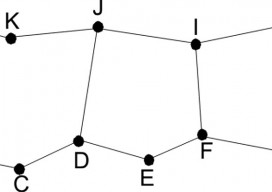Tag Archives: gnss

Going for the Long Shot
Intuicom’s RTK Bridge has come a long way, including use for hydrographic surveying. Editor’s note: A product name can become a default term for a particular solution; this is the case with the RTK Bridge, a trademark name for the product that Intuicom, radio communications component company, began working on nearly a decade ago. And...

I Don’t Need No Stinkin’ Statistics
Surveying Statistics, Part 1 Do you perform GNSS surveys? Do you use OPUS or perform RTK surveys simply because you don’t understand your software’s output? Do you always use the compass-rule adjustment for traverse data simply because that’s the way you have always done it? Do you ever have a situation where you know something...

RFID
Above: RFID tags take many forms. The inside of a tag shown above—designed to attach to metal infrastructure in harsh environments, such as water pipes and valves—has a thin copper “bow-tie” antenna with a minuscule chip in the middle. It’s shown contrasted with a grain of rice. An electronic handshake has brought together the worlds...

Mapping Peripheral
A review of Trimble’s R1, a GNSS Bluetooth peripheral for mobile devices, with multiple options for correction sources. The idea of a GNSS “puck” has broad appeal: a peripheral GNSS receiver to precision-enable mobile devices such as smart phones, tablets, and a variety of purpose-built field-data-collection devices. There is a lot of functional territory between...
GNSS Next: A Control Center for Real-time GNSS Data
Editor’s Note: GNSS is a global amenity that all segments of society now rely on. While low-precision uses of GNSS can work with the default broadcast products alone, directly from the satellites, all high-precision GNSS uses rely to varying degrees on external “value added” data products. These products, such as enhanced clock and orbit data, are...
Where Theory Meets Practice: Geodetic Observations: Part 1
Since the inception of GPS in the 1980s, surveyors have been presented with GPS baseline reduction results that list both geodetic azimuths and distances for the baseline vectors. In Part I of this article, I present the difference between the normal to the geoid and ellipsoid, which is known as deflection of the vertical, and...
